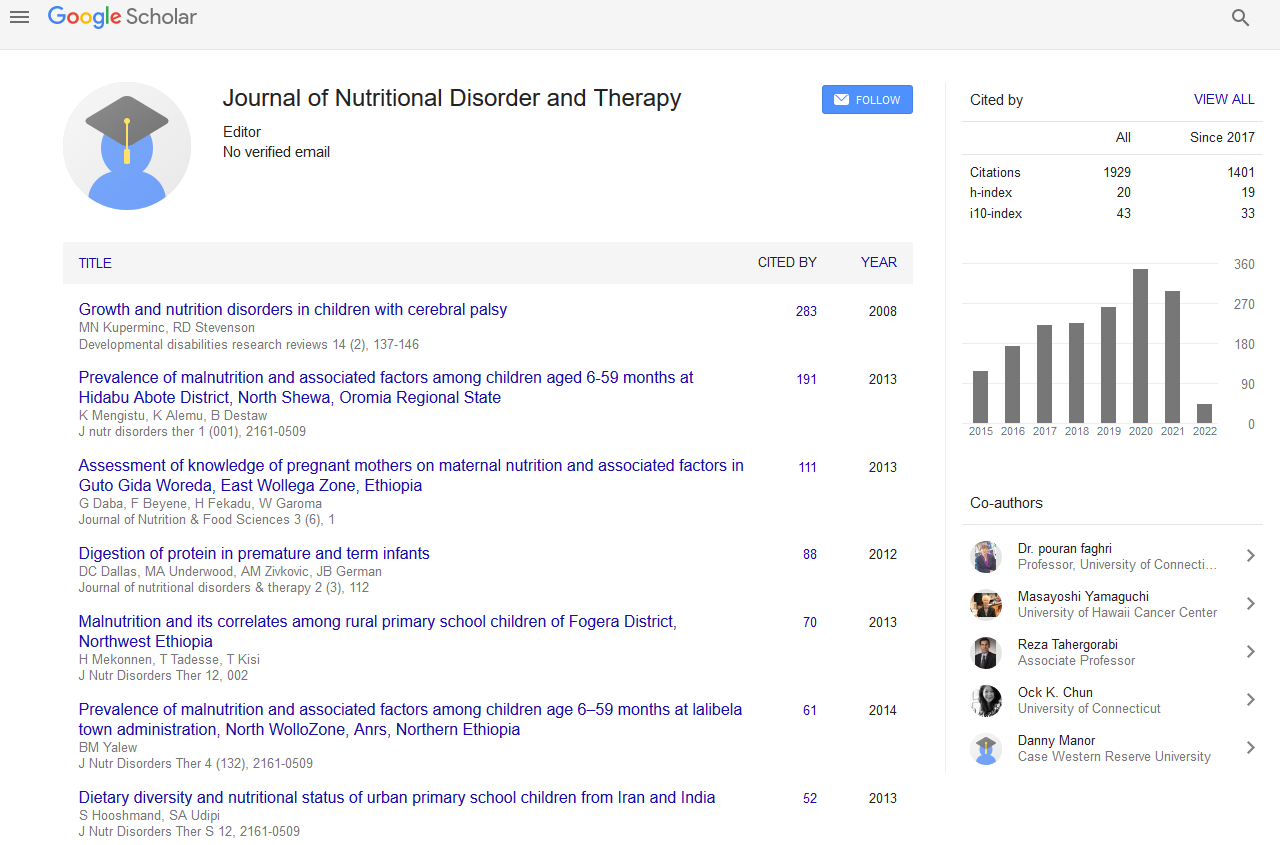Indexed In
- Open J Gate
- Genamics JournalSeek
- Academic Keys
- JournalTOCs
- Ulrich's Periodicals Directory
- RefSeek
- Hamdard University
- EBSCO A-Z
- OCLC- WorldCat
- Publons
- Geneva Foundation for Medical Education and Research
- Euro Pub
Useful Links
Share This Page
Journal Flyer

Open Access Journals
- Agri and Aquaculture
- Biochemistry
- Bioinformatics & Systems Biology
- Business & Management
- Chemistry
- Clinical Sciences
- Engineering
- Food & Nutrition
- General Science
- Genetics & Molecular Biology
- Immunology & Microbiology
- Medical Sciences
- Neuroscience & Psychology
- Nursing & Health Care
- Pharmaceutical Sciences
Abstract
Dietary Habits and Intakes Associated with Obesity and Overweight among Adolescents in the State of Qatar
Ghazi Daradkeh, Asma Al Muhannadi, Chandra P, Adam Fadlalla, Moudi Al Hajr and H. Al Muhannadi
Background: In Arab countries particularly in Qatar, nutrition transition in food choices and dietary habits have been changed from healthy diet pattern to unhealthy fast food pattern. As a result overweight and obesity rates are increasing to alarming figures. The aim of this study is to assess the prevalence of obesity and overweight among adolescents in Qatar and its relation with their eating pattern.
Methods: A cross – sectional study of 1225 adolescents (51% male and 49% female), aged 15 to 18 years, were randomly selected from 21 secondary schools in Doha - the capital of Qatar during October 2012 and Feb 2013. Data was collected by using self – reporting questionnaire that included questions on their eating / drinking habits and anthropometric measurements, Statistical analysis were performed using the Statistical Package for Social Sciences software (SPSS, Version 15.0). The level of significance was set at P< 0.05.
Results: This study showed that the overall prevalence of overweight and obesity were (18.5 % and 19.1 %) respectively. The prevalence of obesity among males (25.3%) was significantly higher than among females (12.6%) p<0.0001, while overweight prevalence of female (21.0%) was significantly higher than among males (16.3%). When the prevalence of obesity and overweight was combined together it was significantly higher among males (25.6%) than in females (23.7%). Waist circumference was significantly higher in males (77.82 ± 17.3) than in females (73.06 ± 10.2). Eating habits of the students showed that Frequency of foods intake (fruits, milk and energy drinks per week) was significantly higher among males than females, while intake of (sweets, French fries and cake/doughnuts) was higher among females than among males. Results shows there was no significance difference in frequency of other food items between males and females.
Conclusion: Overweight and obesity is prevalent, unhealthy food habits are common among adolescents. Nutrition and health educational programs are required to reduce the tendency of overweight and obesity and to improve their eating habits.


